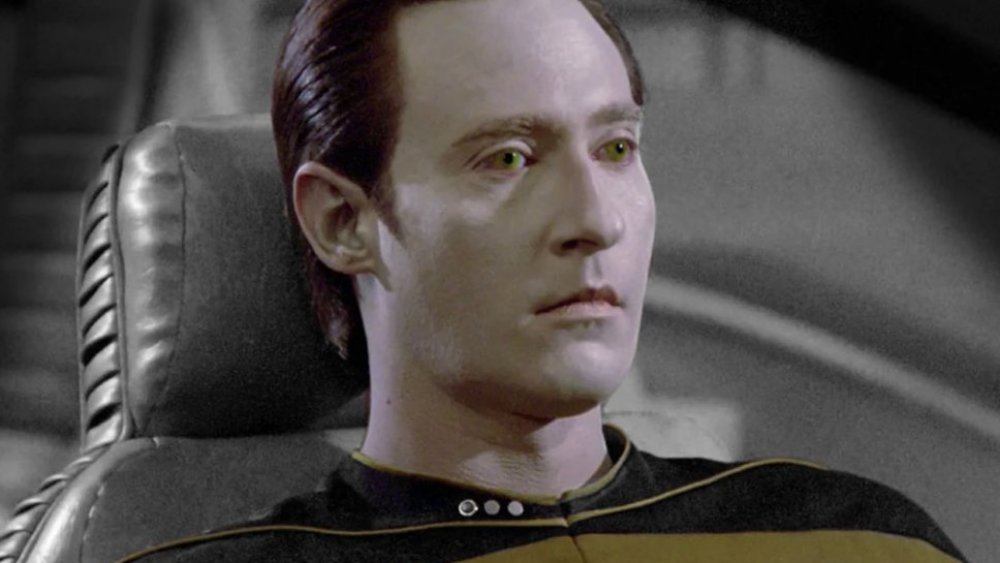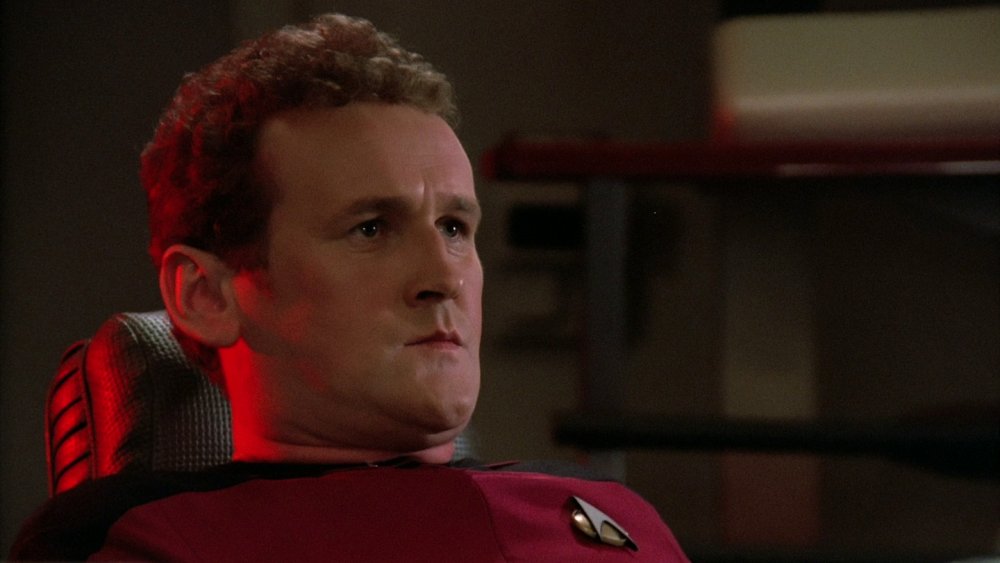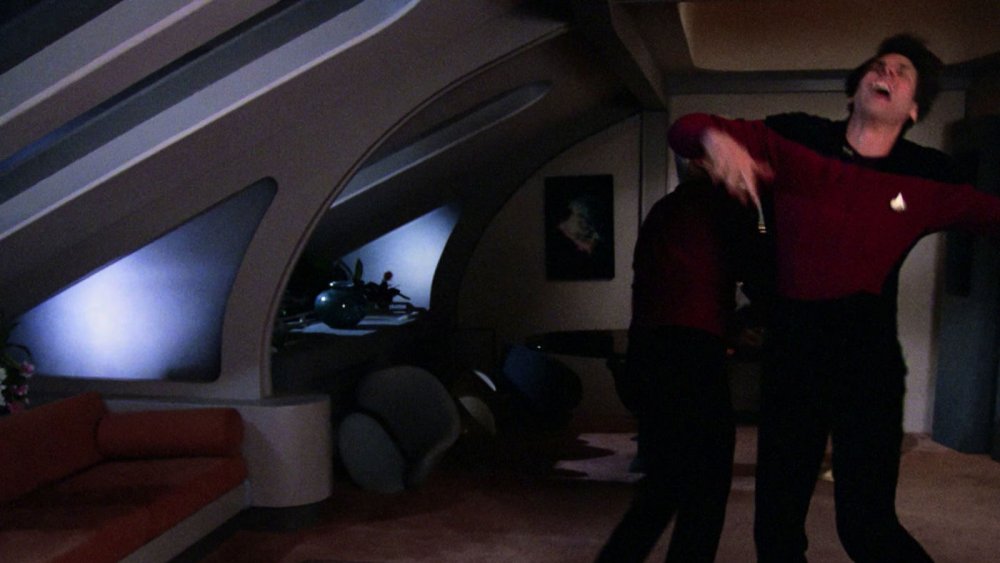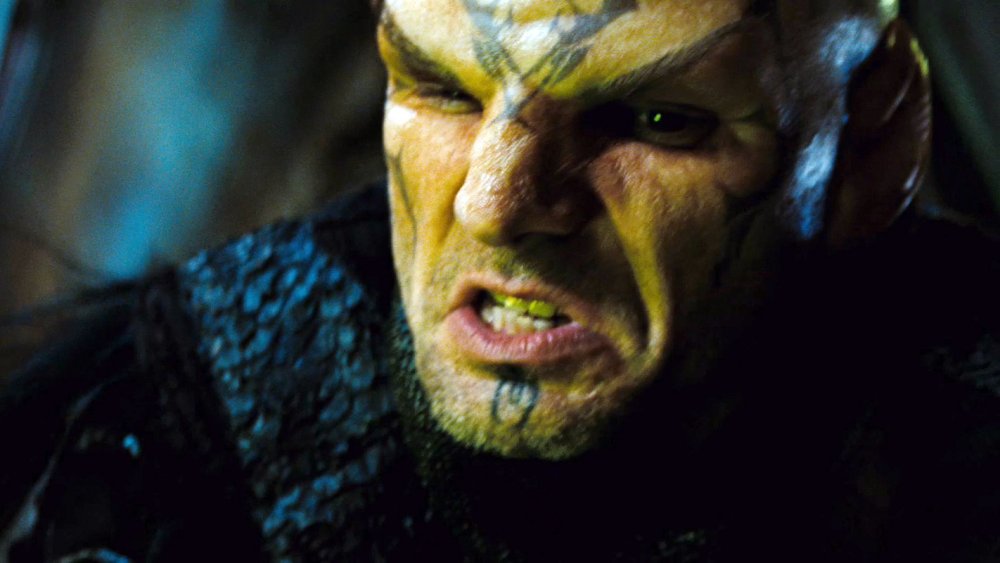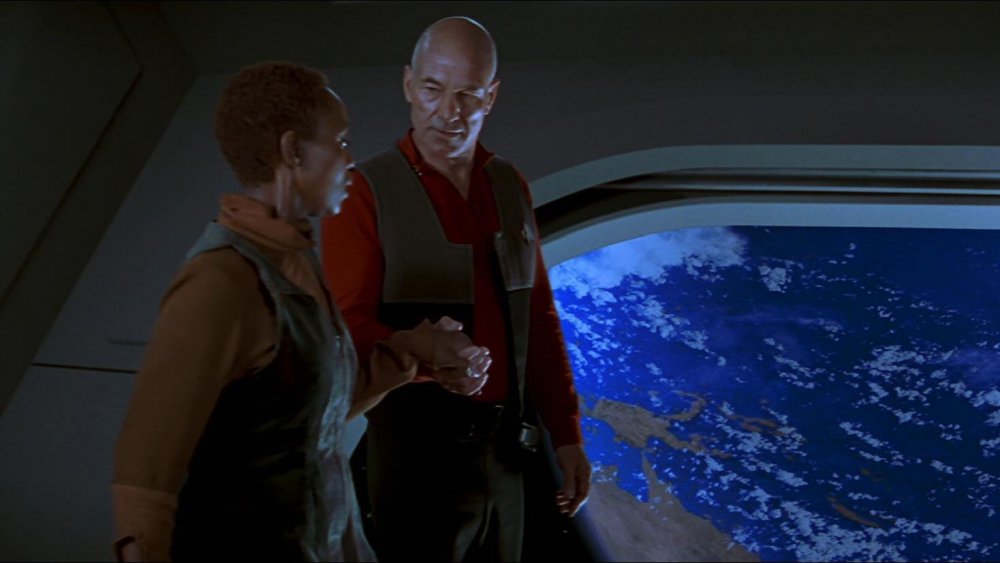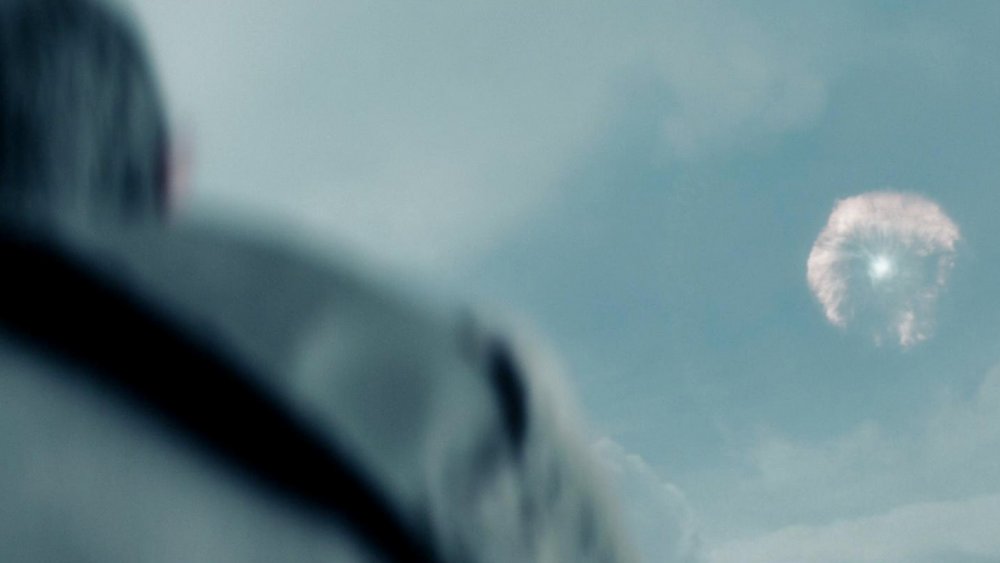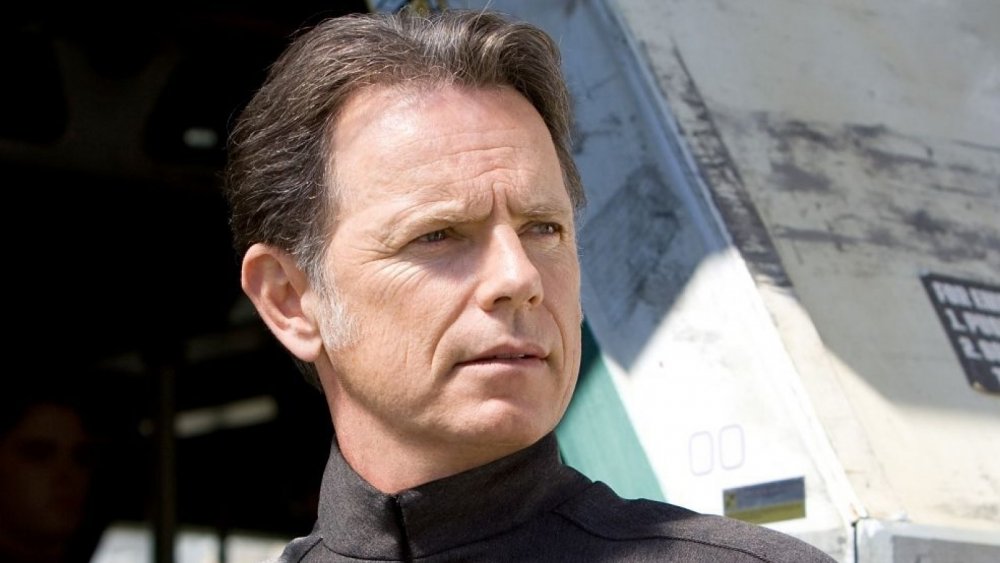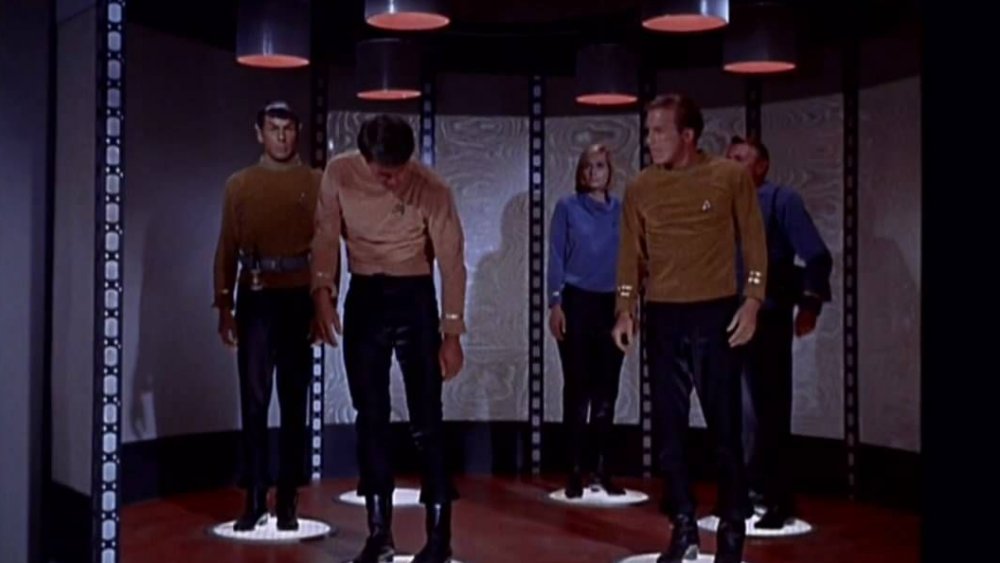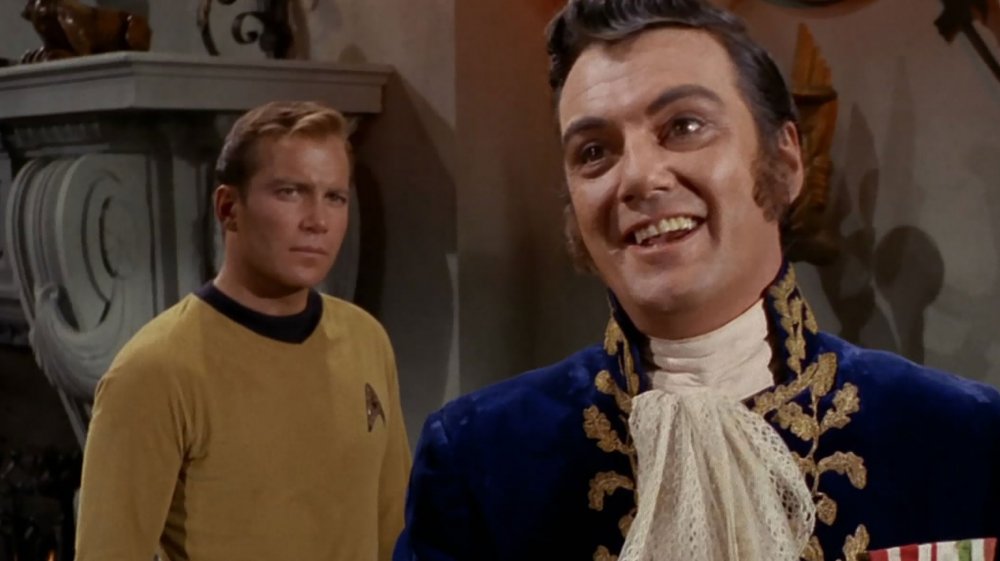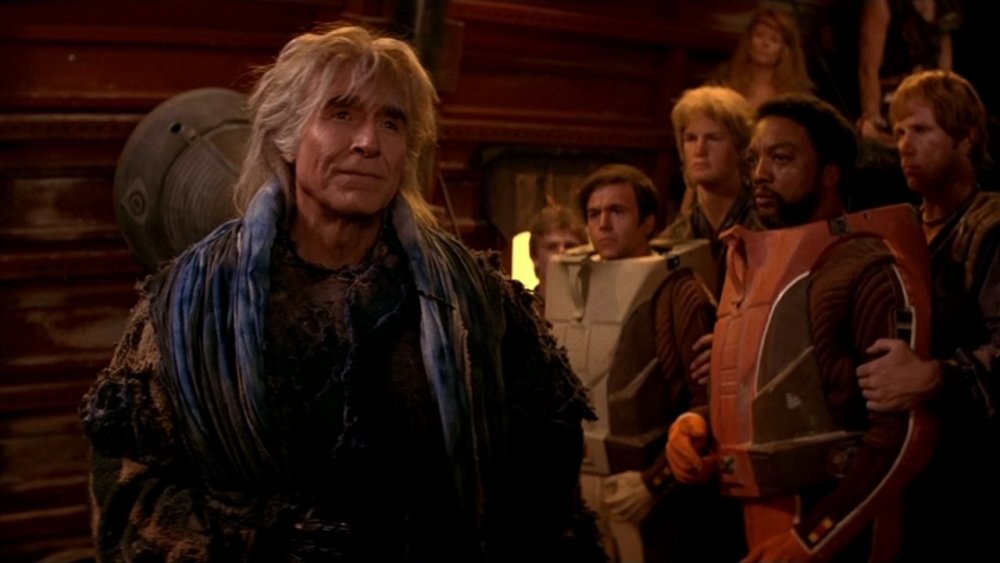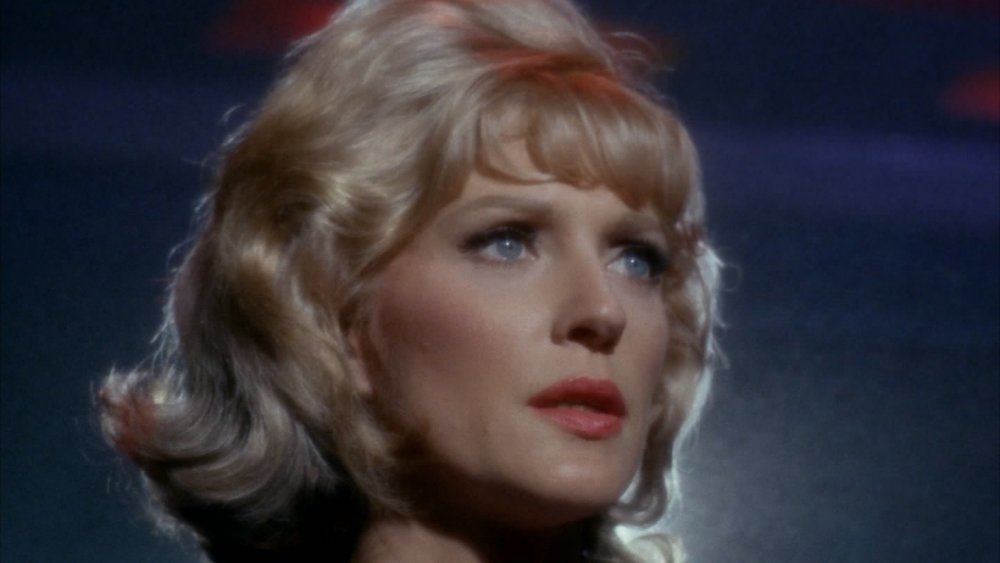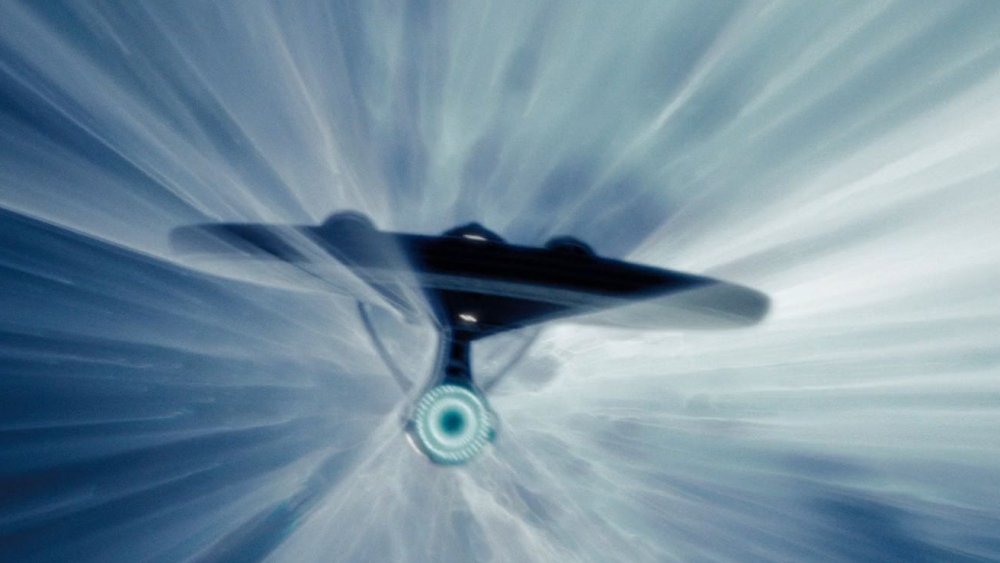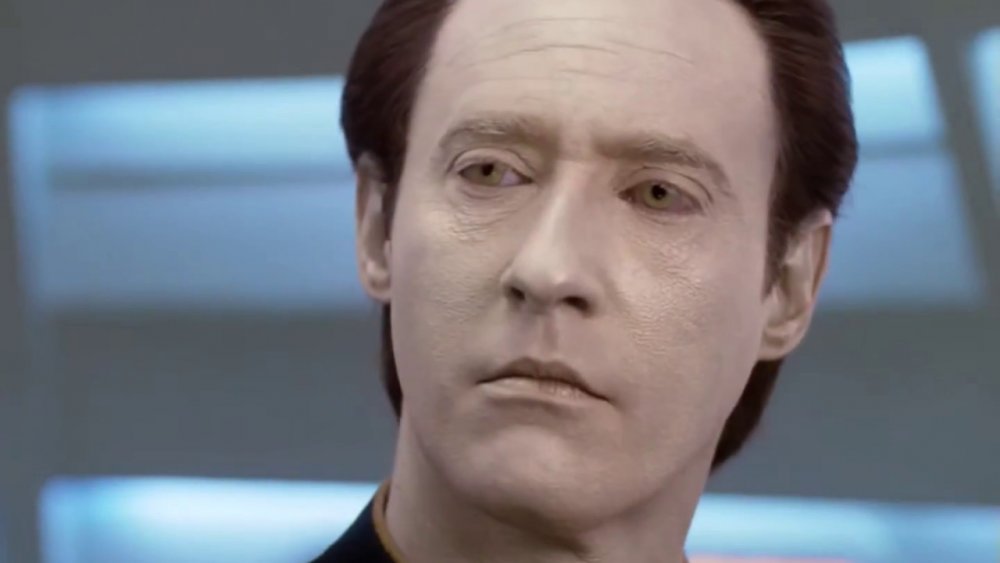Mistakes That Are Hard To Ignore In Star Trek
Star Trek has been a part of pop culture for nearly six decades. Through eight different television series, 13 films, and countless novels, comics, cartoons, and other media, Gene Roddenberry's vision of the future is familiar to everyone, whether they're fans of science fiction or not. That scale makes for a wonderfully rich and complex fictional universe ... but that complexity means it gets harder and harder every year to keep everything straight.
With all the various characters, settings, and J.J. Abrams' alternate universe, it's no surprise there have been plenty of mistakes in the various Star Trek productions. But simple production errors or minor continuity problems you can overlook. The budgets and prestige associated with Star Trek have varied so wildly over the years that it's hard to blame anybody when Spock's ears look a little wonky or when a re-used establishing shot shows a character who shouldn't be there. But the errors on this list are more than that. They're mistakes so big that they're difficult — probably impossible — to ignore.
What's up with Miles O'Brien?
TV shows introduce minor characters without clear backstories all the time, and sometimes those characters prove too popular or useful to just discard, necessitating a sudden and unexpected infusion of detail. Such is the story of Miles O'Brien, who appeared in the first episode of The Next Generation (TNG) as a nameless crew member working the transporters. According to the collaborative fan site Memory Alpha, O'Brien's rank has been variably "crewman," "lieutenant," "warrant officer," and "ensign junior grade." Eventually his rank was stabilized as "chief petty officer," but even that was never actually mentioned onscreen and is just sort of accepted by everyone as canon.
O'Brien wasn't initially intended to be a major character. He didn't even get a last name until the second season (he had to wait two more seasons to get a first name), and no serious effort was put into his backstory until season four. Trek producer and writer Ronald D. Moore explained that, "O'Brien was originally just a day player on TNG and very little, if any, thought went into his rank or background for quite a while." While this makes perfect sense in terms of the logistics of producing a television series, sci-fi needs a certain level of verisimilitude to work, and having a military organization treat a crew member's rank like a random afterthought is almost unforgivable.
It's hard to ignore that terrible fight scene in Star Trek: The Next Generation
Picking on production errors isn't always fair. TV shows have to grind out episodes on schedule and on budget, after all, and sometimes mistakes just have to be included in the final product. That's especially true when it comes to action scenes. Everyone knows that stunt doubles do a lot of the heavy lifting in action scenes, and nitpicking continuity mistakes that don't really impact the quality of the story or performances seems petty when you consider the (literal) decades of entertainment a franchise like Star Trek has given us.
But sometimes there are mistakes so violently obvious and terrible that they're enraging. Sure, you can't afford to reshoot every fight scene that doesn't turn out great ... but you should probably reshoot a fight scene that turns out as awful as the one between William Riker and Rear Admiral Quinn in the otherwise classic Next Generation episode "Conspiracy." In this legendary (for all the wrong reasons) scene, you can see the stunt doubles pretty clearly for several agonizing seconds. This isn't just a blink-and-you'll-miss-it glimpse. This is as if two entirely new actors were hired for the scene midway through filming, with only minimal effort put into making the stunt professionals look anything like the actors they're subbing for.
Nero looks pretty lazy
The 2009 reboot of Star Trek brought into the world by J.J. Abrams is essentially set in an alternate universe. While it's arguably a smart narrative choice, some timey-wimey magic had to be woven into the story involving a black hole and some time travel in order to get us there. The villain of the film, a Romulan named Nero, blames Spock and the Federation itself for the destruction of his planet, Romulus, and then accidentally travels back in time, where he decides to exact his revenge. He almost immediately manages to kill Captain Kirk's father, George ... and then does absolutely nothing, apparently, for a few decades while George's son, James Tiberius, grows up to be the cocky future captain we all know and love.
Considering he's on a mission of vengeance and in a universe where Romulus hasn't been destroyed yet, you might imagine he could find better uses for his time. As it is, audiences are left questioning what exactly he's been up to for all that time. The explanation is easy. According to The Nerdist, scenes were shot showing how Nero and his crew were captured by Klingons and held in prison for most of that time, but the scenes were cut before release. You can choose to include those scenes as canon in your head, but the fact remains that the official story leaves Nero hanging out in deep space, sulking, for 20 years or so.
Star Trek: First Contact forgot about New Zealand
As The Telegraph notes, it's almost comically common for New Zealand to be left off of maps. So common, in fact, that there's a whole subreddit devoted to the phenomenon. So you'd think that the producers of a major motion picture predicated on the idea that mankind has expanded civilization into space and routinely sees the world from that vantage point would be very careful in choosing the maps used in special effects shots ... but you'd be wrong.
In the film First Contact, Captain Jean-Luc Picard takes a character named Lily to an airlock and shows her Earth from the ship's location in space. Australia is clearly shown ... but in the spot where New Zealand should be, it's just blue ocean. Obviously, someone in the effects department picked up a crummy map image to create the effect, and you might be tempted to explain it away as future climate change or some other disaster (the film is set in the year 2063), except that New Zealand is referenced many times in the Trek universe, so that doesn't work. It's just a mistake that, once seen, can't be unseen.
How is Spock watching that black hole?
Science fiction as a genre of entertainment exists on a spectrum of realism that ranges from "just barely fictional" (The Martian) to "science is essentially magic" (Doctor Who). Star Trek falls somewhere in the middle, generally. While it isn't above inventing things like dilithium crystals or playing fast and loose with the laws of physics when it comes to faster-than-light travel, it tends towards reasonably realistic depictions of space travel and life on board massive ships. No one's watching Star Trek for the science education, in other words, though it usually doesn't outright offend ... with the exception of one sequence in 2009's Star Trek which sports science so bad that even the most forgiving fan has to wince and squint their way through it.
As astronomer Phil Plait explained (via Slate), the scene has Spock standing on the planet Delta Vega watching as Vulcan is consumed by a black hole. That's essentially the same as if you were standing in your backyard watching as Mars got consumed by a black hole, meaning you wouldn't really see an up-close view, would you? Forget what would be happening to Delta Vega itself if it was really that close to the formation of a black hole — Spock simply wouldn't be able to see what he's seeing in the film.
Pike's glaring mistake
Captain Christopher Pike is only slightly less iconic to fans than the famous Star Trek captains Kirk, Picard, Sisko, and Janeway. He was the first captain of the U.S.S. Enterprise in the original pilot episode, returned in the classic two-part episode "The Menagerie" late in the first season, and has been rebooted as a character several times (most recently in Star Trek: Discovery).
In the 2009 reboot, J.J. Abrams imagined Pike as a veteran officer who inspires James T. Kirk to enter Starfleet Academy. Portrayed by Bruce Greenwood, this version of Pike is sort of an ideal Starfleet officer — calm, ethical, and smart. So it's especially upsetting when Pike says the following while trying to convince Kirk to follow in his father's heroic footsteps: "You understand what the Federation is, don't you? It's important. It's a peacekeeping and humanitarian armada."
The problem? That's not what the Federation is. That's what Starfleet is. The Federation is an interplanetary governing body. So yeah, it kind of ruins the moment and undermines the gravitas that Captain Pike's character had been earning up to that scene because it makes you wonder how in the world Pike passed his entrance exams if he can't even get the fundamental definitions right.
The varying power of Star Trek's transporter
Science fiction stories have to be careful not to completely blow up the limitations of reality and the laws of physics, or they wind up with technologies so advanced and powerful they're essentially magic, and fans start wondering why you can't just solve every problem by using it. Star Trek established several technologies that are potentially problematic — the replicators can make just about anything, the Holodeck can create immersive illusions and characters that can achieve sentience and affect reality — but the biggest problem is the transporter.
Astronomer and writer Phil Plait points out that the transporter is shown to have the ability to re-write people's DNA in the Next Generation episode "Unnatural Selection" (it's used to cure Dr. Pulaski by overwriting her DNA with an earlier copy), and in 1979's Star Trek: The Motion Picture, a horrific transporter accident shows the flip side of this capability. And yet this power, which could be used in an infinite number of ways, is never a major plot device again. It's possible the implications of this — that everyone entering the transporter bay is being scanned, destroyed, and recreated elsewhere — discouraged the writers from pointing it out again. Just as likely is the fact that having a magic machine that can reset anyone to yesterday's version was simply too powerful to have lying around.
A mathematical mistake in The Squire of Gothos
The golden rule for science fiction is, if you're not 100 percent certain of the science, don't include it. Why not? Well, because someone is always going to check your math. In the original series episode "The Squire of Gothos," the otherworldly character of Trelane tells the crew of the Enterprise that he's been observing Earth. They do some back-of-the-envelope calculations regarding the distance between the planets and conclude that Trelane is about 900 years behind Earth history. In other words, because it takes time for light to travel, Trelane is essentially seeing Earth's past.
That's all well and good, but as the vlog Truth OR Myth points out, the original series canonically takes place in the 23rd century, and the first season of the original series takes place in the year 2265 specifically. That would mean Trelane is observing 14th-century Earth, but he's explicitly aware of Napoleon and the American Revolution, so he must be watching the early 1800s. So these Starfleet officers are either absolute trash at basic math, absolute trash at basic physics, or absolute trash at Earth history.
Chekov and Khan shouldn't know each other
The Wrath of Khan rescued the Star Trek film franchise after The Motion Picture failed to get people terribly excited. A sequel to a classic episode from the original series ("Space Seed"), it delivered a crackerjack story that addressed the crew's encroaching middle age and offered some iconic backstory for Captain Kirk (including how he defeated the infamous no-win scenario known as the Kobayashi Maru), not to mention some absolutely incredible scenery-chewing from Ricardo Montalban. It also has a mistake you just can't ignore and maintain your sanity.
When Pavel Chekov meets Khan Noonien Singh on Ceti Alpha V, Khan and Chekov clearly recognize each other from the Enterprise's earlier interactions with the late 20th-century superman. The problem? As Tor points out, Chekov wasn't a character on the show when "Space Seed" aired, and thus he never met Khan onscreen. While you can imagine that Chekov was a crew member and interacted with Khan offscreen — several tie-in books and comics have done just that, including the film's novelization — it's simply a mistake the writers either didn't notice or chose to ignore for dramatic effect.
Star Trek's breathing computer
One of the most iconic aspects of the future imagined by Gene Roddenberry is the ship's computer, which utilizes voice interaction technology that puts the modern-day Alexa to shame. One of the reasons the computer on the Enterprise was such an iconic part of the show is thanks to the voice work of Majel Barrett-Roddenberry, Gene Roddenberry's wife, who provided the voice of the ship's computer for decades (she also portrayed Nurse Chapel on the original series and Deanna Troi's formidable mother, Lwaxana Troi). Roddenberry's voice work was fantastic, managing to give the computer some personality while still sounding very computer-like.
However, there was one huge problem with the computer's voice, especially during The Next Generation. Sometimes production forgot to edit out the sounds of the very human Majel Barrett-Roddenberry doing things like breathing, something a computer would probably not do. These moments are subtle, and you have to be listening for them. For example, in one scene in the pilot episode of Star Trek: Voyager, Lieutenant Tom Paris asks a replicator to list the varieties of tomato soup it can produce (yes, really), and you can clearly hear the computer take a breath while rattling off the menu, which kind of ruins the illusion of an advanced artificial intelligence explaining the many, many varieties of tomato soup available in the far future.
The warp speed in Star Trek is a mess
The currently accepted model of the universe pegs the speed of light — 186,282 miles per second — as the upper limit when it comes to zooming around in space. Of course, you can forgive a sci-fi franchise like Star Trek for hand-waving the laws of physics a bit. No one wants the Enterprise to take 60 years just to get to its first mission, after all, and so they came up with the warp drive (we're not even going to admit that the ridiculous spore drive on Discovery exists).
While warp speed has never been precisely defined (smart), scientist James O'Donoghue (via Science Alert) did some calculating and concluded that warp one is essentially light speed, and warps two through ten are just ... faster, somehow. All well and good (though he goes on to demonstrate that at warp one, it would take the ship a disappointing four years plus just to go from Earth to Pluto), but the real problem is in the details. Consider an exciting action sequence in the Star Trek universe. The Enterprise is chasing a Klingon ship at warp one. The Klingons drop out of warp, and one second later, so does the Enterprise. But one second later puts the Enterprise 186,282 miles away. Even a fraction of second puts the ships tens of thousands of miles apart in the emptiness of space.
There are a lot of mistakes when it comes to Data's speech patterns
One of the pleasures of Star Trek is its thoughtful explorations of sci-fi tropes, and the android Data is one of the most successful such ruminations in its history. Data allows the franchise to explore questions of sentience, free will, and spirituality in intelligent and unexpected ways, while also allowing for a lot of really bad robot jokes.
However, one of the worst mistakes The Next Generation writers made was establishing that Data, as an android, couldn't use contractions due to programming limitations — something they waited until episode 12 ("Datalore") to bring up. On the one hand, this lent Data a slightly off-center formality that underscored his inhumanity. On the other hand, according to Wil Wheaton (via HuffPost TV), this was a new idea the writers introduced in order to distinguish Data from Lore, the other android who looked like Brent Spiner, and Spiner was upset at the sloppy way it was being introduced, especially since Data had used contractions in previous episodes. Later in the series, the writers dropped the idea that Data couldn't use contractions, and there are, of course, plenty of possible explanations for the shift. But in the early going, this was an obvious and grating mistake born out of a nifty concept that no one really committed to.
